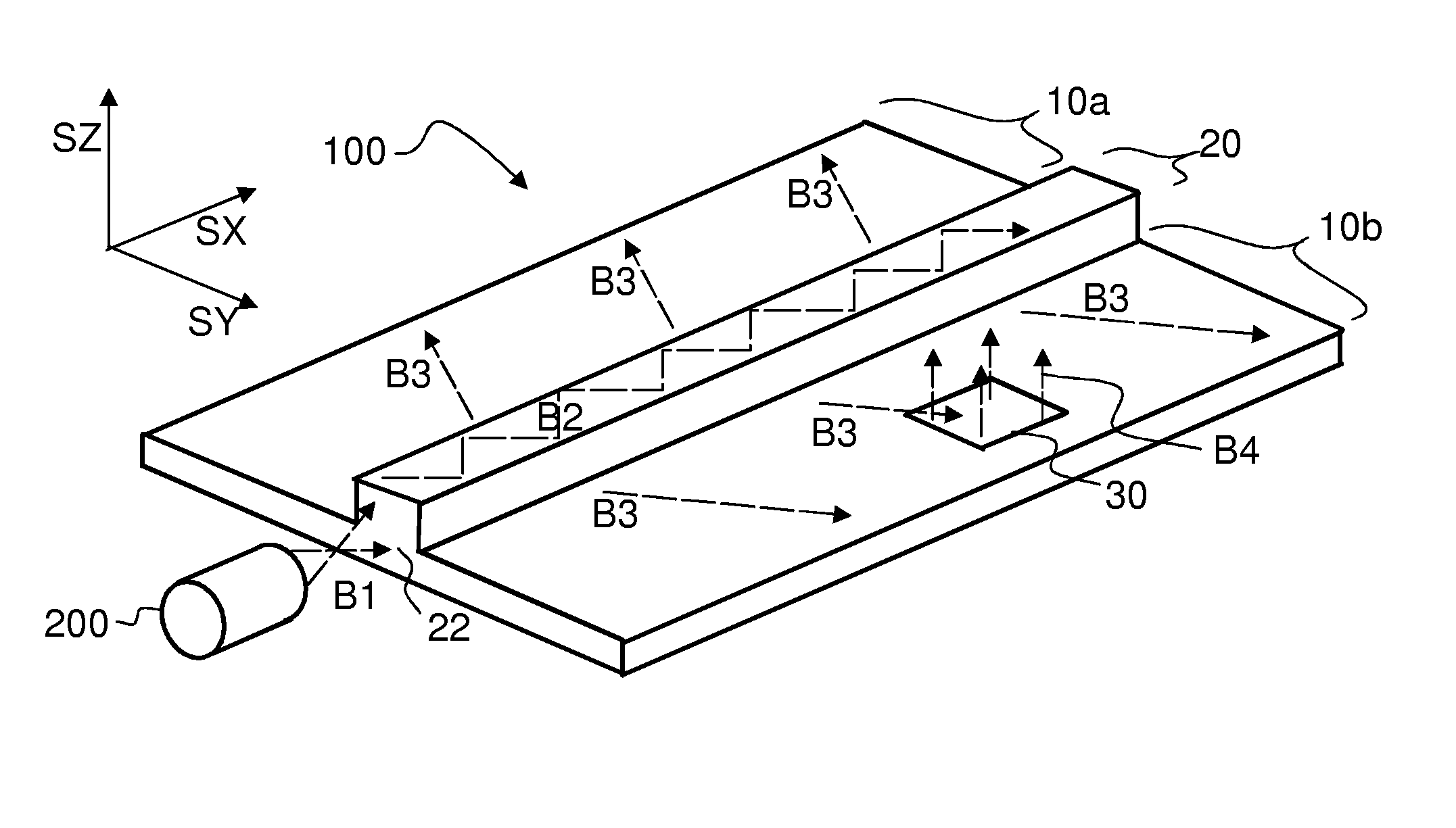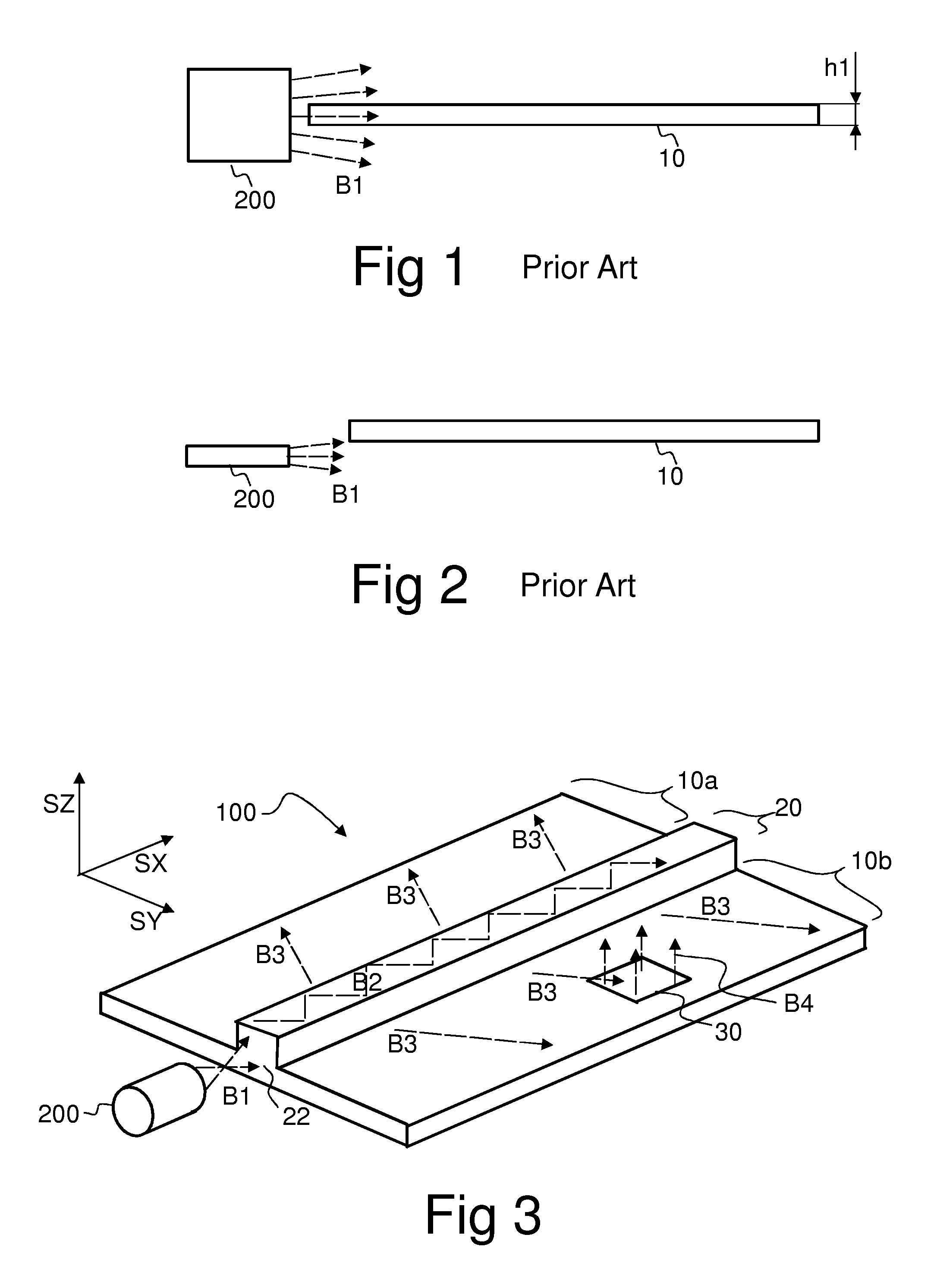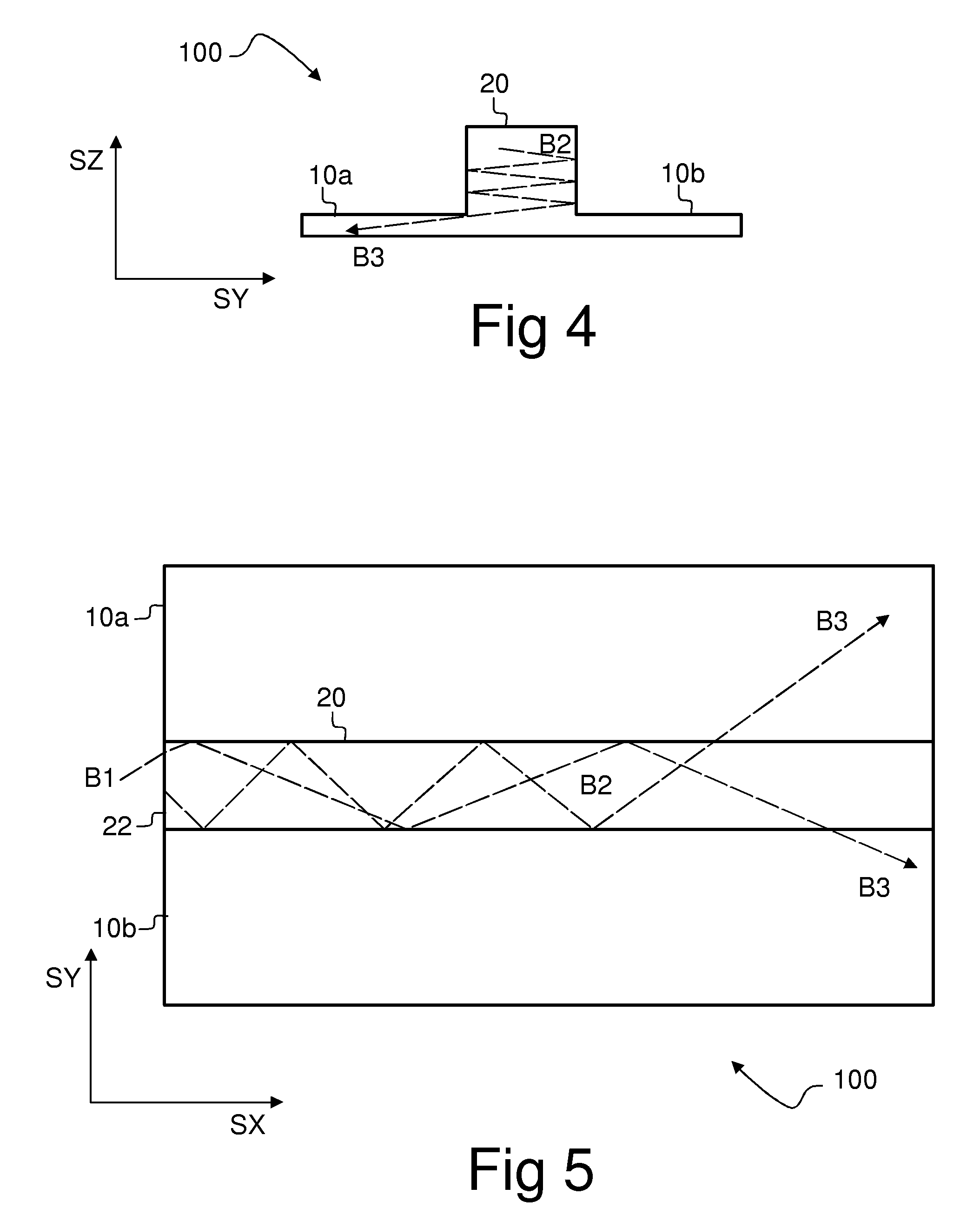Method for coupling light into a thin planar waveguide
a planar waveguide and light technology, applied in the direction of planar/plate-like light guides, lighting and heating apparatus, instruments, etc., can solve the problems of significant alignment problems and loss of optical power, and achieve the effect of facilitating alignment of light sources, good coupling efficiency, and good efficiency of optical power coupling
- Summary
- Abstract
- Description
- Claims
- Application Information
AI Technical Summary
Benefits of technology
Problems solved by technology
Method used
Image
Examples
Embodiment Construction
[0064]FIG. 3 shows a light distributing device 100 comprising planar waveguides 10a, 10b, and a ridge 20 to couple light into the planar waveguides 10a, 10b. A light beam B1 provided by a light source 200 is coupled into an end 22 of the ridge 20 in order to form a light beam B2 which propagates in the longitudinal direction SX of ridge 20.
[0065]The lower sides of the ridge 20 are optically coupled to the planar waveguides 10a, 10b. Thus, a fraction of the light B2 propagating in the ridge 20 is transversely coupled from the sides of the ridge 20 into the planar waveguides 10a, 10b, in order to form light B3 which propagates in the planar waveguides 10a, 10b.
[0066]The light is confined to the ridge 20 and to the planar waveguides 10a, 10b by total internal reflections, i.e. the light is waveguided in the ridge 20 and the planar waveguides 10a, 10b.
[0067]The light distributing device 100 may further comprise one or more out-coupling portions 30 to couple light out of the plane of t...
PUM
 Login to View More
Login to View More Abstract
Description
Claims
Application Information
 Login to View More
Login to View More - R&D
- Intellectual Property
- Life Sciences
- Materials
- Tech Scout
- Unparalleled Data Quality
- Higher Quality Content
- 60% Fewer Hallucinations
Browse by: Latest US Patents, China's latest patents, Technical Efficacy Thesaurus, Application Domain, Technology Topic, Popular Technical Reports.
© 2025 PatSnap. All rights reserved.Legal|Privacy policy|Modern Slavery Act Transparency Statement|Sitemap|About US| Contact US: help@patsnap.com



